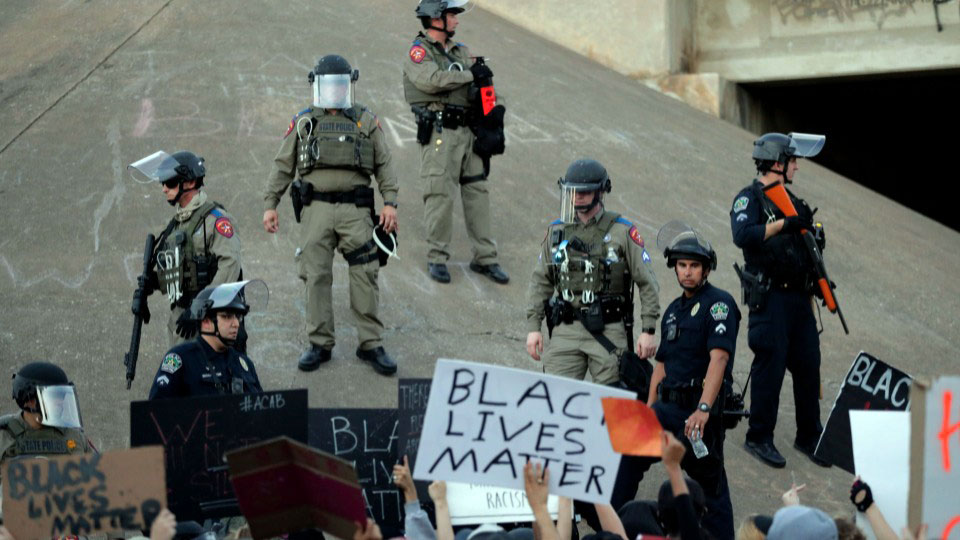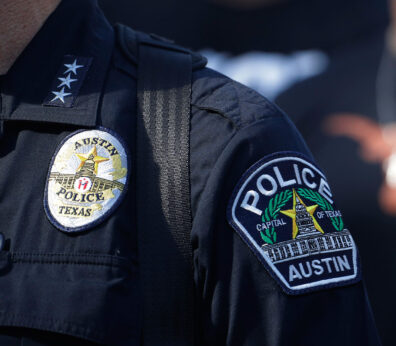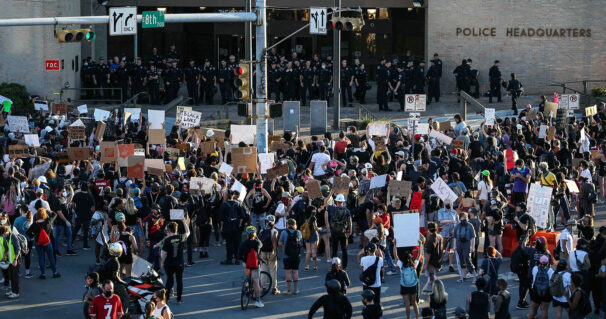
AUSTIN, Texas—When voters here go to the polls Nov. 2, they will decide the fate of Proposition A. The initiative seeks to increase funding for the Austin Police Department, which already receives more than a third of the city’s entire budget. Estimates suggest the cost of Proposition A will be as much as $120 million per year, which could be a permanent line item due to a law that Gov. Greg Abbott recently put in place to punish cities that decrease police funding.
While many in Austin reject the initiative over fiscal worries—including the Austin Firefighters Association and the Austin EMS Association—an even greater concern has yet to garner much attention—namely that the initiative stands to change the entire political landscape of the city.
For many years, Austin has enjoyed the reputation of being one of the state’s most progressive cities. As home to the main campus of the University of Texas and other notable institutions of higher learning, many regard Austin as standing out from the political and social conservatism that is the norm in Texas, but the city’s policing history tells a different story.
Surely the move on the part of Austin to significantly reduce police funding in the wake of national protests over the murder of George Floyd reveals the political tone of city governance, a tone and action that angered right-wing leaders in the state. But right-wing politicians strongly opposed any efforts to decrease law enforcement funding in a city whose police department has a less-than-sterling reputation for its relations with Black and brown people.
A rallying point of right-wing sentiment in Texas has been the slogan “Blue Lives Matter,” and it continues to appear in the form of yard signs in suburban neighborhoods supporting police—a support that many on the left rightly see as racially-based sentiment against the Black Lives Matter movement.
The support for a heftier, more visible police force is not just a suburban phenomenon, though. It reaches into the heart of the city, also finding supporters in affluent downtown neighborhoods.

In a red herring manner, proponents of Proposition A claim that putting more police on the streets would decrease crime in the city, which they erroneously claim to be at an all-time high. Proponents ask for at least two police officers for every 1,000 residents. The number of police per residents in Austin already ranks third in the state, with Dallas coming in first with 2.31 officers per 1,000 residents.
A greater police presence will not mean less crime, but it will mean a greater police influence in the matters of private citizens. Proposition A calls for 35% of police employment time to be budgeted toward “community engagement.” This means more police visibility in affluent, low-crime, neighborhoods, as well as more police activities in impoverished and racially divergent neighborhoods where the risks for profiling and brutality are highest.
In late May 2020, as protests against the murder of George Floyd and police violence targeting people of color spread throughout the nation and much of the world, hundreds of Austin residents converged near the downtown police headquarters. At one point, many walked onto the interstate and blocked traffic. The dangerous but not uncommon protest tactic was one that police should have been able to handle—by virtue of their training—without excessive use of force.
However, on May 30, 2020, the violence of the Austin Police Department was extreme. Video from that day clearly showed officers armed with shotguns and firing volleys of “beanbag” munitions directly at protesters in what often appeared to be an almost indiscriminate manner, in many instances striking the faces and eyes of protesters.
APD targets included persons not in the roadway, people not interfering with police or traffic in any way, and even trained medics who were on the scene aiding those already shot. Some of the victims suffered severe and life-altering injuries. One was just 16 years old. The police later claimed their rounds were old and the rubber pellets had hardened, but even new ones are known to cause injury or death when fired at close range or at the head, as many police officers did that day. Confronted with the extent of the injuries during the protests, the chief of police vowed to cease using such munitions for “crowd control,” but not long afterwards, the department ordered more anyway.
Residents of Austin were rightfully outraged and demanded that the city council take action. The prior December the council had already voted not to fund the class of cadets scheduled to begin in June 2020 after an investigation uncovered bigotry and abuse in training materials, classes, and on social media, including on the part of some senior officers.

In Austin, the protests of May and June 2020 were not only about the murder of George Floyd. Just before that, in April 2020, an Austin police officer shot Mike Ramos with a “beanbag” in an apartment parking lot. Someone had reported Ramos for taking drugs; he was unarmed. Ramos then attempted to drive away, and another officer shot and killed him.
The officer was recently indicted for murder, but other officers who have shot people of color in recent years have so far avoided accountability. This was the situation facing the city council during the summer of last year, as Austin finally began to grapple with the problem of a bloated police budget and a department that not only blocked every attempt at reform but even denied they needed to change much at all.
Conservative political forces in Austin have used the events of last summer to bolster their claims for a larger and stronger police force. Proposition A seeks indoctrination by force, requiring the mayor, council members, city council staff, and the director of the Office of Police Oversight to complete the curriculum of the Citizen Police Academy and participate in Austin’s Ride-Along Program. Under Proposition A, the same requirements will apply to the Public Safety Commission, the Community Police Review Commission, and to successor boards.
Backers of Proposition A want to give the impression that there is widespread support for it across party and ideological lines. The organization behind Proposition A is an outfit calling itself “Save Austin Now.” It was co-founded by Matt Mackowiak, the chairperson of the Travis County Republican Party. Earlier in the year, Save Austin Now successfully sponsored Proposition B, which voters approved in May 2021. Proposition B, an initiative aimed at homeless persons, criminalized them for sitting, lying down, or camping in public areas and prohibited solicitation at specific hours and places. Ken Casaday, president of the Austin Police Association, has also served as a board member for Save Austin Now.
The opposition to Proposition A includes a long list of well-known organizations, including the Austin EMS and Firefighters Associations, AFSCME Local 1624, the ACLU of Texas, Black Lives Matter, Austin Justice Coalition, the Texas Civil Rights Project, and the Texas Criminal Justice Coalition, and others. The Travis County Democratic Party is also among those opposing the measure.
Under Proposition A, the social programs specifically designed to prevent and reduce crime are threatened with a lack of funding. Save Austin Now has already demonstrated its bias against the homeless population of the city earlier in the year with Proposition B. As reported by the Texas Tribune, Austin City Council member Mackenzie Kelly said on a televised town hall, “We see a large sum, millions of dollars, going towards homelessness in the community… We see it towards social services and things that really don’t need to be funded by municipal government.”
Notably, Proposition A has accepted monetary support from local businesses and capital investment firms and individuals, receiving over $2 million in contributions—more than double the opposition. The estimated five-year cost of Proposition A is an estimated $598.8 million, an outrageous sum to be sure, but it’s not just the fiscal calculations that should be causing concern. If this initiative passes, it could change the entire political situation in the city, handing more influence to police and right-wing forces.










